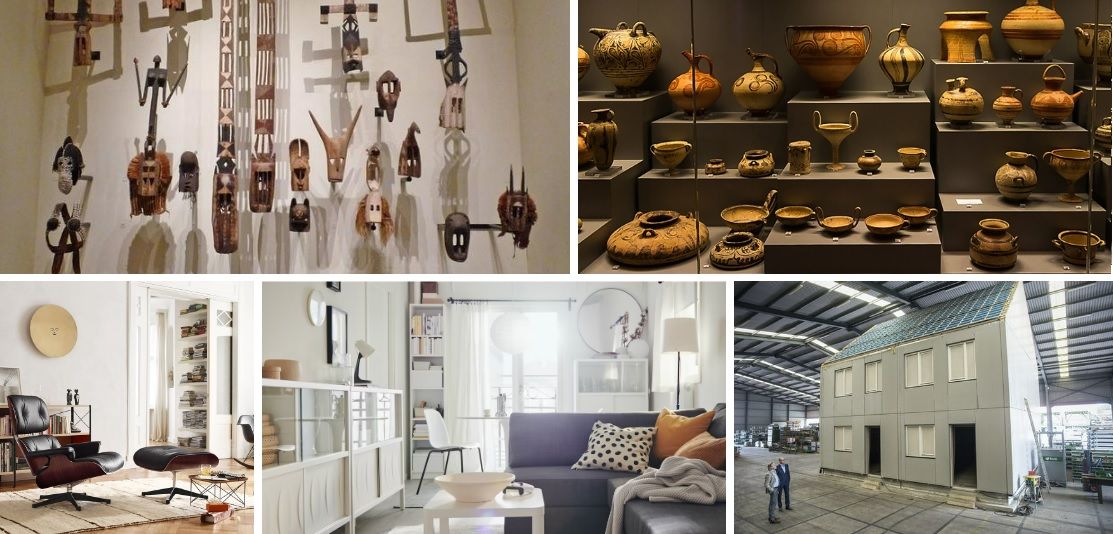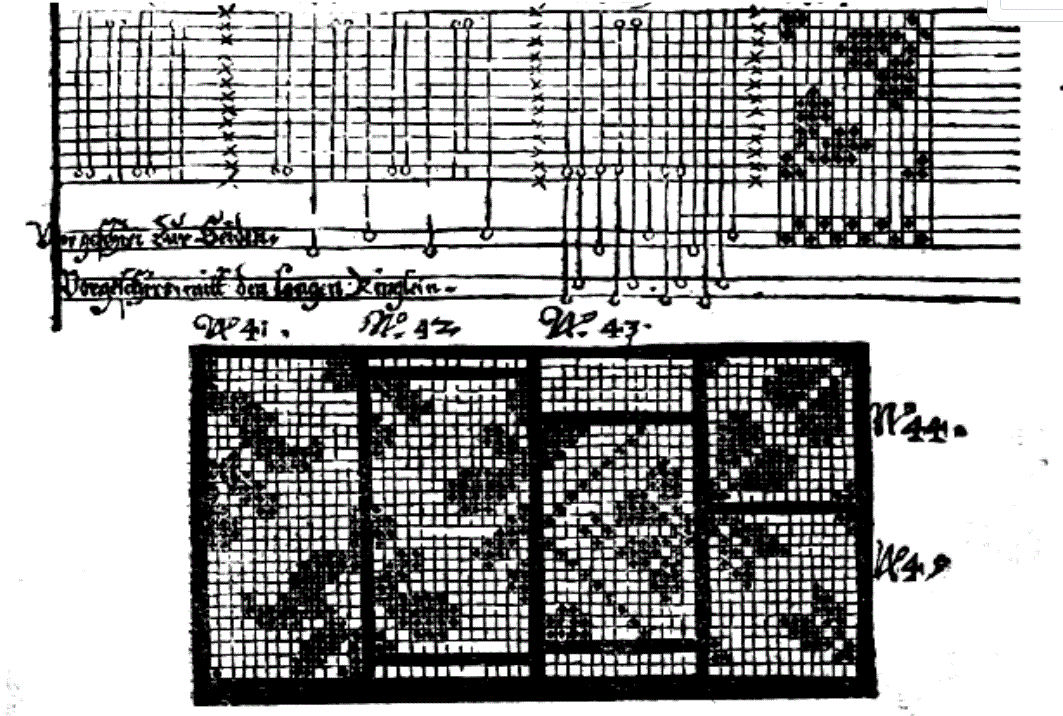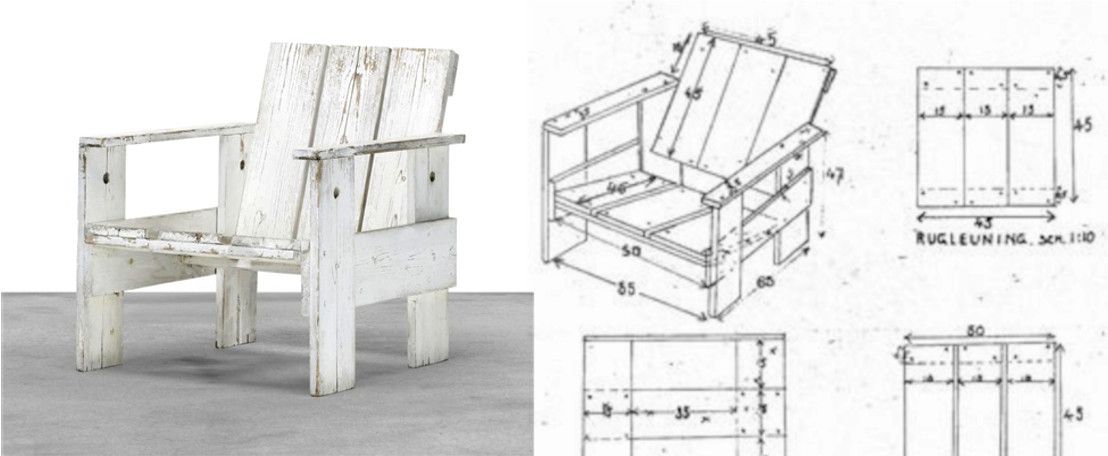
Codifying Design: Why design needs a scripting language and an online platform
🚀 Launching Archiyou Alpha
It would be possible to produce many more artists in all branches of knowledge, if only there were no shortage of publishers
Marx Ziegler - creator of the first codified handbook of weaving (1677)
The power of design - for me - is found more in ethnographic and archaeological museums than anywhere else. There the influence of the fashions and personal fancies of the day is weakened. From this perspective design is revealed as a peculiar balance between daily functional needs and economic constraints, social norms and individual expressions, cultural aspirations and blind spots.
From the the neolithic stone structures of Göbekli Tepe, the Egyptian Giza Necropolis to the Aztec city states, from the empires of Ming, the Romans and Mali to the variety of indigenous peoples of America and Australia - from its tents to palaces, stone tools to factories, talismans to monuments; design is the rather consistent way people want to wake up in the morning, face the world and intend to shape it.
Design is an ongoing process of shaping and planning for a better life
Design is an ongoing process of shaping and planning for a better life; It’s philosophy without the unlivable ideas. I like to think this progressive practical purpose of design is why the word gained the meaning of planning in the Renaissance and reached its high point during the industrial modernism of the 20th century.
Now let’s say someone in the far future would walk into an archeological museum showcasing a lovely exhibition of an average Western life of the first part of the 21st century; what would it look like? I will not be surprised if it looks a lot like a piece of a magically preserved IKEA showroom floor. And I mean that as a compliment.
I feel that IKEA probably is the best and most impactful design company of the end of the 20st century and the start of the 21st; Delivering as a company on so many broken promises of famous modernist designers by “creating a better everyday life for the many people”. How did they do it? By sticking to the hard work of design.
The core of the IKEA method is a highly iterative design process to achieve predefined goals which are based on accumulation of knowledge and market research. The enormous scale of the company is to further facilitate that process. Of course IKEA is known to optimize towards a low price for consumers - with a simple aesthetic, basic functionality, flat pack logistics and DIY assembly - but increasingly includes sustainability too.
While it’s easy to criticize its current priorities, products and environmental impact; the IKEA method makes this balancing act central to the design process and can thus change to create different outcomes. Impactful improvements seem a matter of timing and choice or outside market and regulatory pressures. For scalable solutions I would bet on IKEA over any anonymous home decoration chains or high-end design labels. But what if there could be alternative bets?
Of all lessons that one can learn from IKEA the most important is the radical sense of design that iterates slowly and encompasses, integrates and balances multiple parameters into products that together serve a certain purpose.
Hidden behind those great benefits of design though, is the huge amount of time, research, information and iteration involved
Hidden behind those great benefits of design though, is the huge amount of time, research, information and iteration involved. Design is expensive! And implicit in all large design-driven companies is their scale to recover these costs; mostly by and selling a lot of the same products and centralizing production.
That’s the somewhat self-defeating paradox of design; the more design process; the more expensive it gets; so either today's products become more uniform and inflexible or more expensive and elite; Either way manufacturing becomes more privatized, opaque, globalized and vulnerable to disruptions.
That’s the somewhat self-defeating paradox of design; the more design process; the more expensive it gets
This is why I feel the role of design diminished as a cultural force; Where the modernist product designers, urbanists and architects - such as Wright, Rietveld, the Eames, Le Corbusier and Perriand - were looking for ways to integrate needs, shapes, desires and production in service of their design intent, contemporary designers are assigned smaller roles as providers of innovative shapes or esthetical services. Probably most people today associate design more with the ideological opaque global brands of IKEA, Apple, Nike, Tesla and Gucci than with individual designers and their vision for society.

From the varieties of shape making cultures (above) to contemporary design. The Eames (bottom left) wanted to “make the best for the most for the least” while their lounge chair (~ $8500) became a symbol of success and luxury. IKEA (bottom middle) did realize that ideal while also bringing uniformity to people's homes all over the world. Bottom right: A mass produced sustainable home without any design.
It’s hard to tell really what happened to this power of design. Why it slowly went from diverse local cultures to global uniformity, from progressive ideals to expensive luxury and from producing design in new ways to production without any design at all.
I feel that the answer might lie in an underestimation of the difficulty of impactful design - how much information, knowledge and integration is required; Just as the process and success of IKEA shows.
Very good books have been written on what happens when design gets lazy; by choosing abstract plans over people and communities (J.Jakobs, W.Rybczynski), uniform styles over diverse hybrid ones (K.Frampton,B.Rudofsky), forgetting its ties to crafts and innovative manufacturing, power structures (M.Tafuri) and traditions (A.Rossi, C.Alexander, J.Habraken) and underestimating energy and environmental impact (B.Calder).
For some years now, I can’t shake the idea that there is something more to it. Something that Christopher Alexander so strongly felt in his Pattern Language but has surprisingly found so little follow up. Namely that we as designers have been neglecting both the integrative process of design (and its optimization), and the field of knowledge that we all start from, share and contribute to.
Designers have been neglecting both the integrative process of design and the field of knowledge that we all start from, share and contribute to
Maybe for some understandable reasons like creating a signature design brand, protecting the value of the design knowledge or avoiding the hype of new technologies. In architectural design you only have to compare the books by Alberti, Serlio or Viollet-le-Duc to the slick branded publications of contemporary famous architects to see how little we share of how design really works.

Left: Page of “The Five books on Architecture” by Sebastiano Serlio that contains highly detailed drawings. It disseminated architectural knowledge all over the world. Right: “Yes is more” by BIG celebrates luck and marketing coolness over knowledge.
While a lot of industries are embracing the information age: Knowledge (Wikipedia), education (MOOC), entertainment (Youtube) and healthcare (DNA sampling, mRNA); Even becoming information itself. Design is not; or very slowly. An exception of course is digital design.
All these fields have become cheaper to access, accessible from all over the world, more flexible, custom, diverse and highly profitable. Design did not.
Design for the information age: Vision of Archiyou.
What if you could visit a website, browse through a lot of designs from all over the world - in various traditional and contemporary styles, in various materials and by different designers? Then easily customize a design to fit your needs, budget and values. After generating a unique version: Get the information you need to produce it or have it produced. You can even redesign it based on its source code. This is the vision of Archiyou.
In other words; We want to codify design knowledge, make it parametric and open it up on the Internet.
We want to codify design knowledge, make it parametric and open it up on the Internet.

Page of book “Weber Kunst und Bild Buch” by Marx Ziegler(1677) that shows the codification of weaving patterns. See Digitale Sammlungen.
Just as Marx Ziegler made the art of weaving public with his revolutionary book some 350 years ago and started its dissemination and automation; We start with codification and publication and then of course adding the power of the Web: marginal-cost, ubiquity and collaboration.
We start with codification and publication and then adding the power of the Web: marginal-cost, ubiquity and collaboration.
In a way Archiyou took codification of design quite literally: Its core is an open source scripting language (based on Javascript and inspired by CadQuery) that can make, transform and arrange shapes. This is the first alpha phase of Archiyou.
Codified design in Archiyou can instantly be altered by changing parameters. This makes it very easy and cheap to create custom designs, evaluate them and generate the information to produce them. Archiyou offers designers a tool and platform to define their products in a flexible and scalable way and build on the work of others.


The Rietveld Crate Chair: Designed to be created out of standard planks from crates. Can be parametrically implemented in Archiyou to work with other plank sizes to create a variety of chairs and benches
Although we invested a lot of time making coding design as easy as possible, we doubt that all designers will quickly get used to it. Designers are not coders, and coders are not designers. In the future we envision new creative tools and business models for designers and consumers but our focus is on sharing design knowledge to a broader audience first.
That will be the second phase of Archiyou: The launch of a design content platform which offers parametric designs that can be outputted in various formats for various purposes: visualizations, feasibility studies, 3d printing, digital production and traditional and DIY production methods.
As Ruskin remarked in 1859: "Design is not the offspring of idle fancy; it is the studied result of accumulative observation and delightful habit." We intend to contribute to this insight by bringing design into the information age.
The alpha phase of Archiyou is launched in august 2022, after which the core will be open sourced and the second phase is planned for the end of that year. All feedback is welcome. See archiyou.com or our forum

